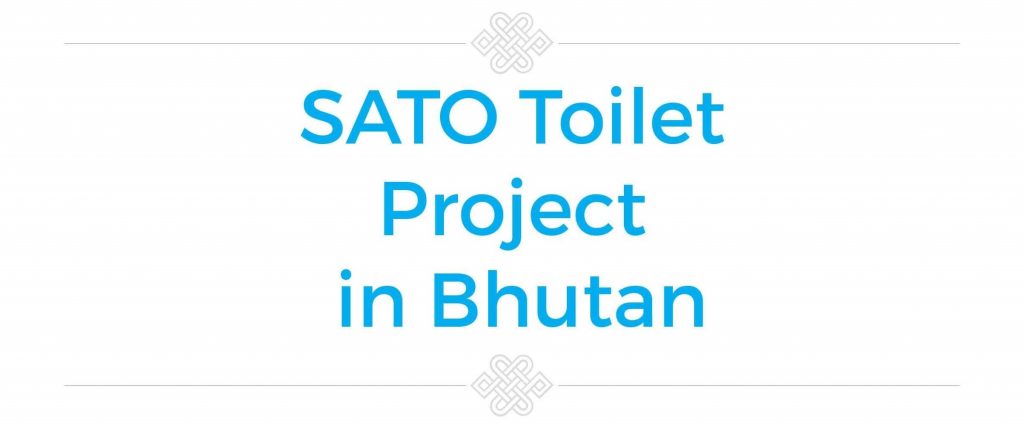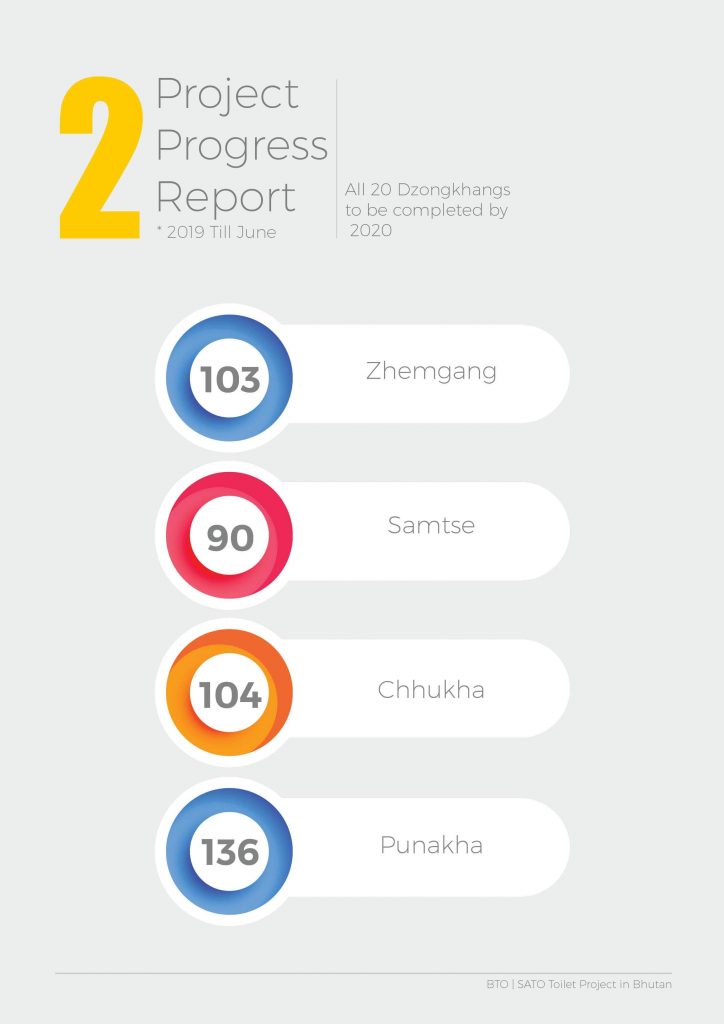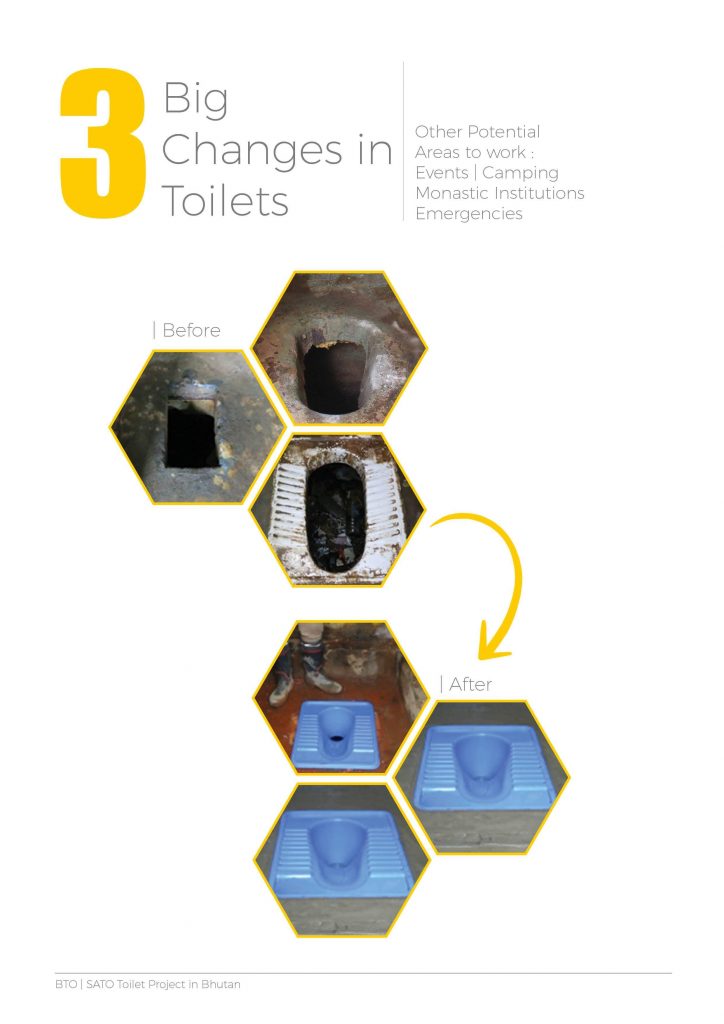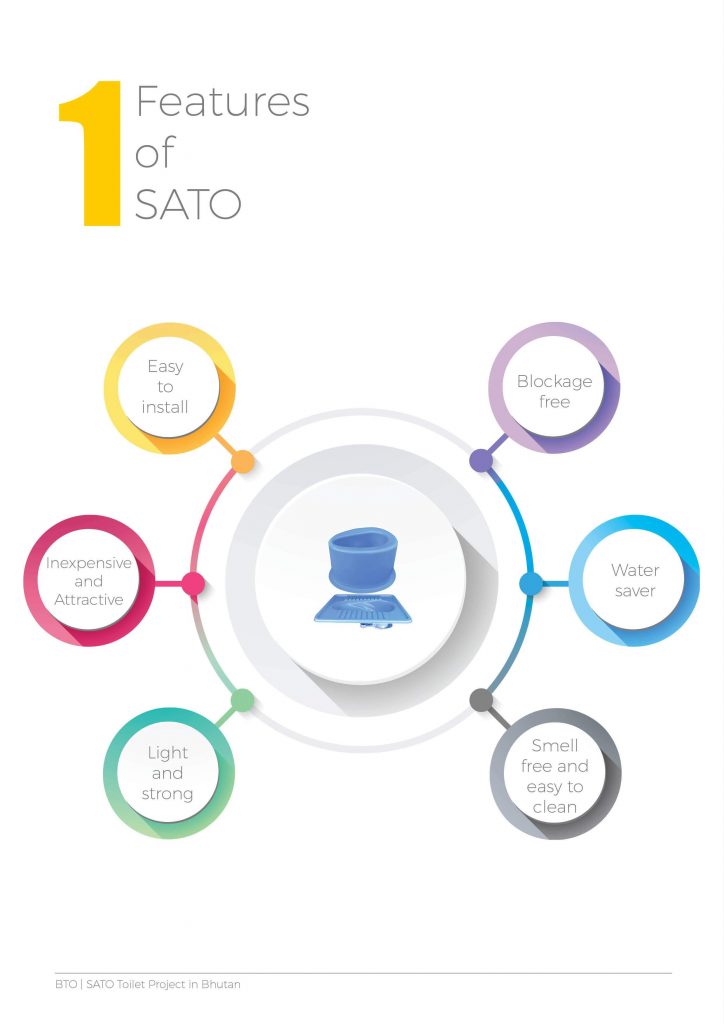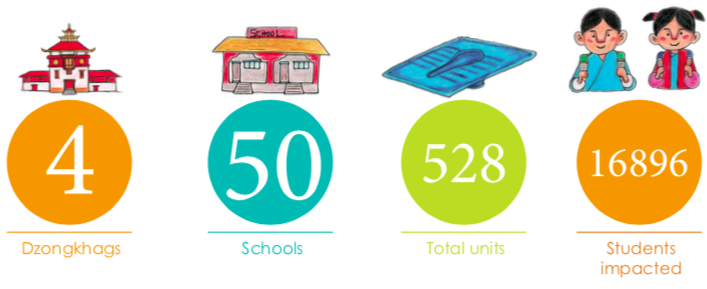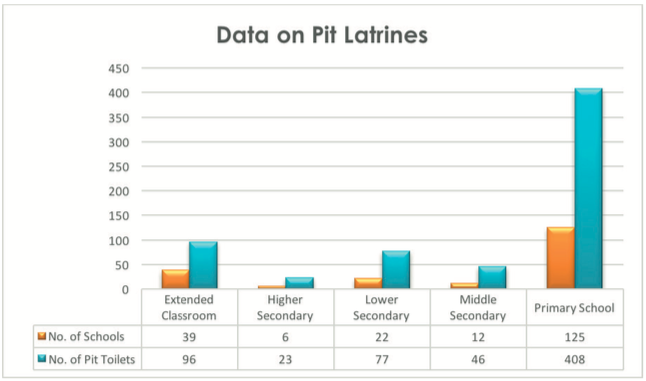
Education Monitoring and Information System (EMIS) data from 2017 show that there are 204 schools in Bhutan that still use pit toilets. 650 pit toilets are in use in these 204 institutes.
Pit latrines are unhygienic and not at all suitable in schools. The foul odour and filthy sight discourage children from using the toilet and developing good toilet etiquette. The open pits are favourable breeding grounds of flies and mosquitoes that leads to spread of diseases in the community.
Therefore, eliminating pit toilets and upgrading them to flush toilets is an urgent matter begging our attention. Health of thousands of young children can be improved by doing so. JCI APDC assisted Bhutan Toilet Org to receive a donation of 1000 SATO pans from Lixil. This simple and robust toilet pot can effectively convert pit toilet to flush toilet at a significantly low cost, without changing superstructures. They have also assisted us in securing support from SARAYA to fund school toilet education program, which is to follow the installation of SATO pans.
To showcase the effectiveness of the project and influence the decision of Ministry of Education with practical evidences, we used the funds from SARAYA to pilot the project in three schools; Dechentshemo Central School, Dechencholing Higher Secondary School and Changzamtog Middle Secondary School. The results were outstanding. 64 units of pit/aqua- privy toilets were upgraded within a week, and schools have reported that it has stopped the foul smell completely, and made the facilities safe for children to use.
The pilot project in the three schools revealed that most toilets in the schools, that were earlier recorded as pour flush toilets, were actually aqua-privy (AP) toilets. This toilet type looks like pour flush toilet with ceramic pot but it is observed to be emitting foul smell like pit latrines because it has the pit underneath with open access. Since the septic tank of AP toilet is directly underneath, it is found that the same technology can be used to upgrade the toilet. Therefore, we wrote to Ministry of Education (MoE) and UNICEF indicating that AP toilets too need to be upgraded along with pit latrines. The convincing results of the pilot project won us their trust and thus we signed a Memorandum of Understanding (MoU) with MoE.
Since signing the MoU on 4th July 2019 we have upgraded 528 units of toilets in 50 schools across four dzongkhags. About Nu. 1.58 million was spent on the project so far. If the same number of toilets were to be renovated or reconstructed in the conventional way it could have cost the government Nu. 79.2 million.
Besides the cost factor, SATO technology is
highly water efficient, and could potentially
save thousands of liters of water each day.
As part of the project, some 90 units of toilets in
50 schools were converted to accessible toilets
using SATO 204, which is a stool type toilet that
enables children to sit on it.
The project has ensured the sustainability by giving skill development training to two officials from each school, the health coordinator and a caretaker. They were practically engaged in the SATO installation training, and were tasked to carry out the project in their schools. They have been trained to carry out maintenance whenever it’s required.
To enhance the role of the students in the maintenance of the school toilet facilities, mass awareness programs were carried out with the students, and all project schools were supplied with WASH education posters to be displayed on the toilet walls. Both these activities were funded by SARAYA, and will be continued with the rest of the schools in the country.
